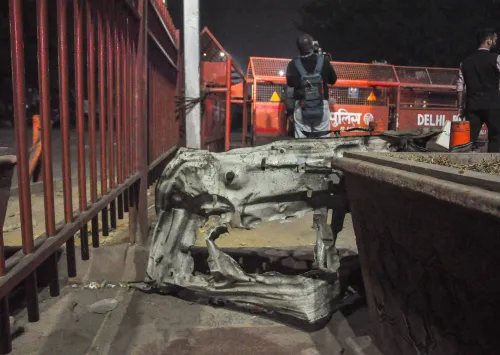Is Andhra Pradesh's New PPP Model the Solution to Medical Education Challenges?

Synopsis
Key Takeaways
- Introduction of a PPP model for 10 new medical colleges in Andhra Pradesh.
- Estimation of substantial cost savings in both development and operational expenses.
- Increased access to undergraduate medical education with 110 new seats.
- Enhanced healthcare services through free diagnostics and OPD.
- Collaboration with esteemed medical institutions to elevate standards.
Amaravati, Sep 24 (NationPress) The government of Andhra Pradesh has unveiled a Public-Private Partnership (PPP) model aimed at establishing 10 new medical colleges to facilitate rapid implementation, enhance quality standards, and broaden healthcare accessibility.
This initiative aims to fill longstanding gaps in medical education and public health infrastructure across the region.
Under this new PPP framework, stalled investments will be revitalized, adding an annual total of 110 undergraduate medical seats for students in Andhra Pradesh.
The government has projected that this model will lead to a significant reduction in costs, estimating Rs. 3,700 crore in development expenses and Rs. 500 crore annually in operational costs.
According to an official statement, 17 medical colleges were previously sanctioned with a projected investment of Rs. 8,480 crore, yet only Rs. 1,550.39 crore (18.2 percent) has been utilized in four years up to June 2024, leaving 11 colleges non-operational and a whopping Rs. 6,152 crore unspent, risking a completion timeline of 15 years at the previous pace.
Following June 2024, the current administration allocated Rs. 786.82 crore to revive stalled projects and has now embraced the PPP model to guarantee timely completion and improved service delivery.
The initiative will facilitate the establishment and operation of ten medical colleges under a PPP framework, prioritizing speed, quality, and accessibility across the state, thereby complementing ongoing government efforts to activate sanctioned institutions.
The PPP model is anticipated to yield savings of Rs. 3,700 crore in development costs and around Rs. 500 crore yearly in operations and maintenance, leveraging private-sector efficiencies and collaborative investments.
The arrangement includes a seat-sharing pattern of 75 Convenor Quota (General) seats per 150-seat college, offering an additional 11 state-quota seats per college compared to previous models. This translates to a total of 110 extra seats across the 10 PPP colleges.
Additionally, the model will guarantee free OPD services, complimentary diagnostics in OPD, and free IPD for 70 percent of beds under PMJAY, NTRVST, and CGHS rates, with paid services applicable to 30 percent of IPD beds for market-rate diagnostics.
Integration of AI-driven diagnostics, telemedicine, and digital health records will be implemented, alongside opportunities for collaboration with esteemed medical institutions to elevate academic and clinical standards.
This model adopts successful PPP practices utilized by states like Uttar Pradesh, Odisha, and Jharkhand for upgrading district hospitals and establishing new medical colleges, as well as PPP-led expansions in leading educational institutions such as IIT Chennai, IIM Udaipur, and IIIT Nagpur.
As of 2024–25, Andhra Pradesh has expanded to 36 medical colleges with 4,046 UG seats, rising from only 6 colleges and 650 seats in 1995–96, driven by both public and private sector involvement.
Despite this growth, delays in capital execution have left 11 sanctioned colleges inactive as of June 2024, necessitating corrective action through targeted funding and a PPP-driven delivery model to meet immediate demands and quality standards.









